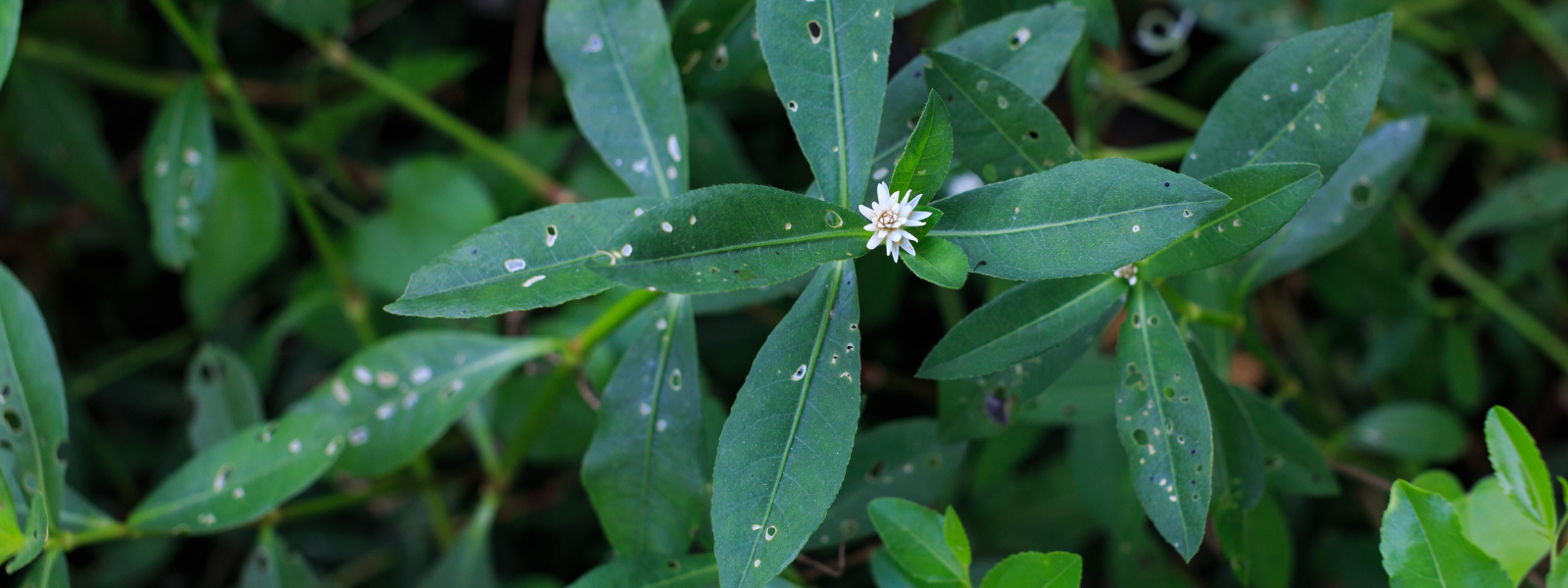
Common Name
Alligator Weed, Joy Weed, Water Mat.
Scientific Name
Alternanthera philoxeroides
Family
Amaranthaceae
Lifecycle
Perennial
Seasons of Growth
Year-round
Key Distinguishing Feature
Floating aquatic plant with opposite, lance-shaped leaves
Alligator Weed grows throughout the year in regions with suitable climates, but its growth may slow during colder months.
Habitat: Alligator Weed is primarily found in aquatic environments such as ponds, lakes, rivers, and wetlands. It often forms dense mats that can cover water surfaces.
Leaves: The leaves are elliptical to lance-shaped, green to reddish-green in colour, and arranged in opposite pairs along the stem. They are often covered in fine hairs and can float on the water's surface.
Stems: The stems are fleshy and can be either prostrate or floating. They can root at the nodes when they touch the ground or water.
Flowers: The small, inconspicuous flowers are white to pale pink and occur in clusters.
Reproduction: Alligator Weed reproduces both vegetatively through stem fragments and seeds, allowing it to spread rapidly.
Ecological Impact:
- Alligator Weed is considered an invasive species in many regions due to its ability to form dense mats that outcompete native aquatic plants, disrupt natural ecosystems, and impede water flow.
- It can negatively impact water quality by reducing oxygen levels and altering the habitat for aquatic organisms.
Control Methods:
- Control of Alligator Weed often involves a combination of mechanical, chemical, and biological methods, depending on the extent of the infestation and local regulations.
- Mechanical control includes manually removing the weed, using machinery to cut and harvest it, and covering it with physical barriers.
- Chemical control may involve the use of approved herbicides, but caution must be exercised to minimize harm to non-target species.
- Biological control agents such as insects and pathogens that specifically target Alligator Weed have been introduced in some regions as a long-term management strategy.
Effective control of Alligator Weed is essential to protect aquatic ecosystems and maintain water quality in affected areas. Local authorities and environmental agencies often provide guidance on the best control practices for this invasive plant.
Key Products for Control:
-
Indigo MetForce 600 - Metsulfuron-methyl
-
Indigo Rapid Fire 800 - Glyphosate (present as acid and ammonium salt)
Additional Images:
Image 1: Weed in an aquatic situation

Image 2: Weed roots systems

Image 3: Flowering weed

Image 4: Up close of Flowering weed

Image 5: Weed grouping up close





